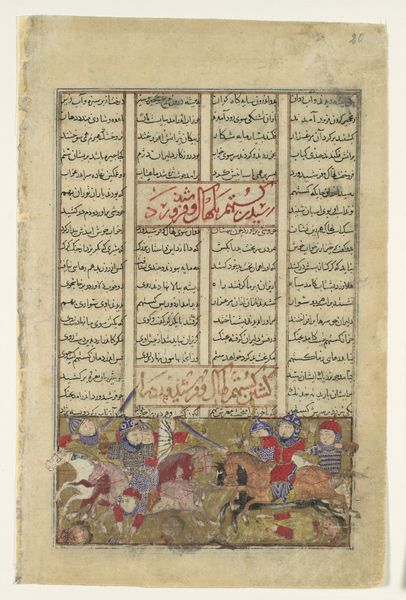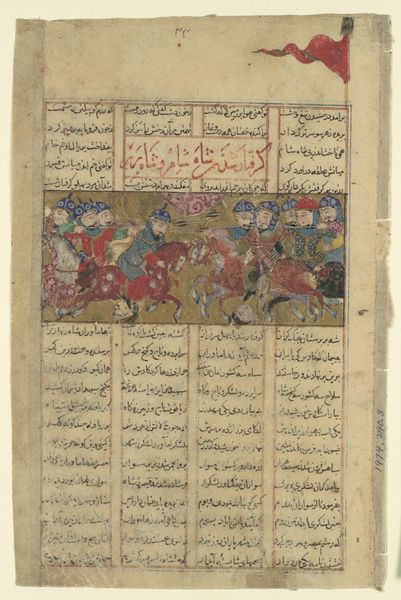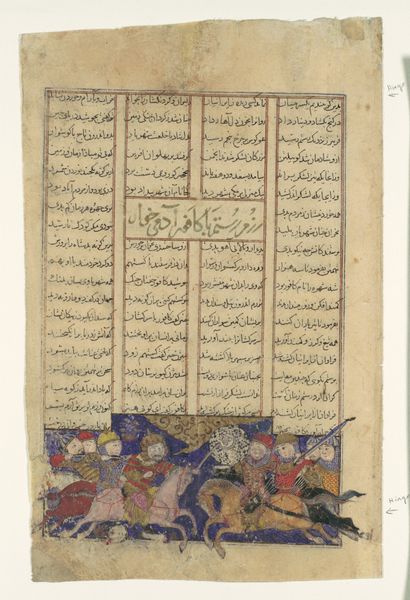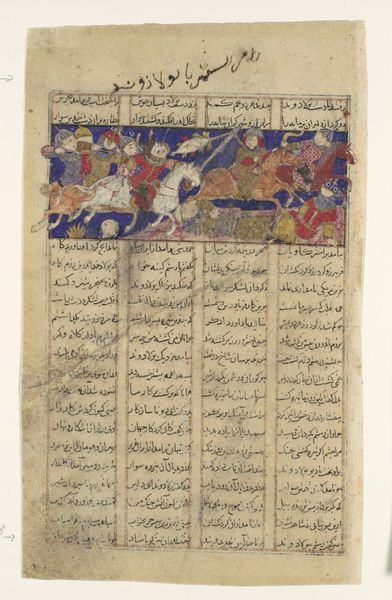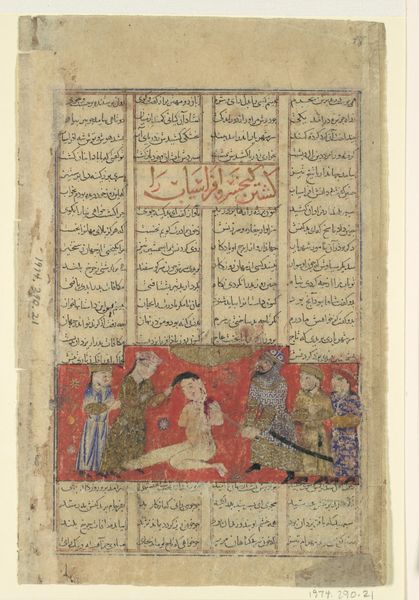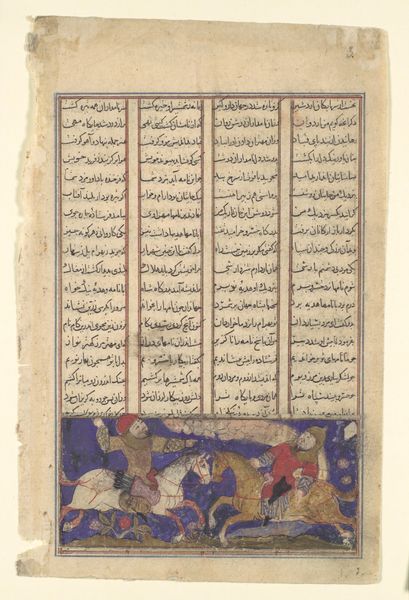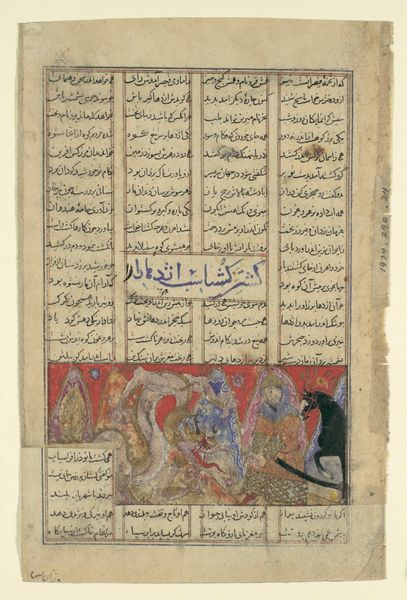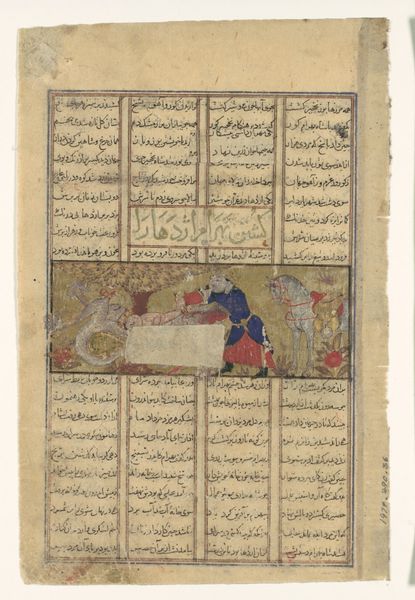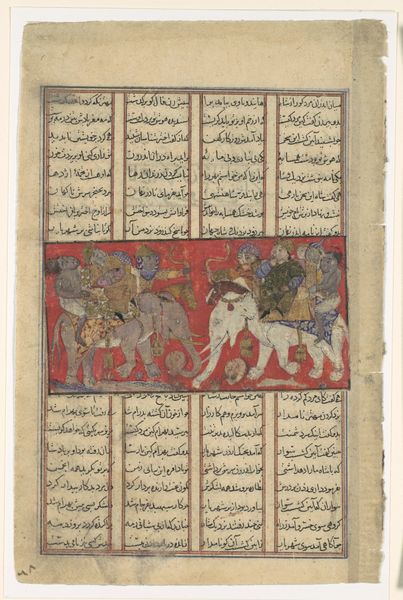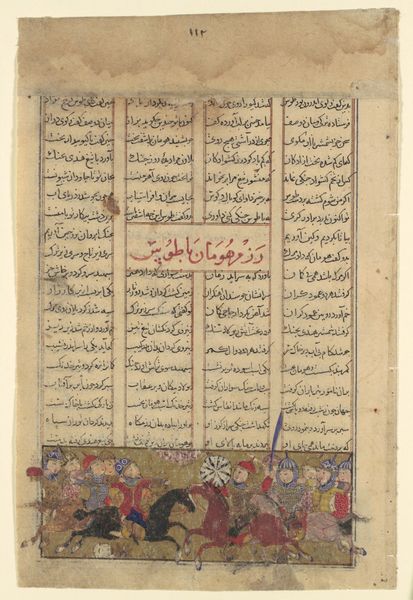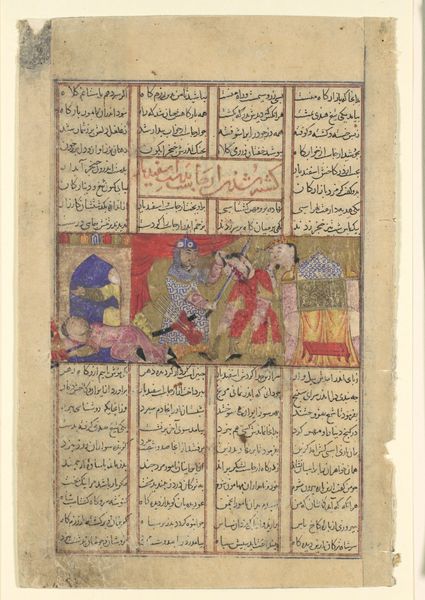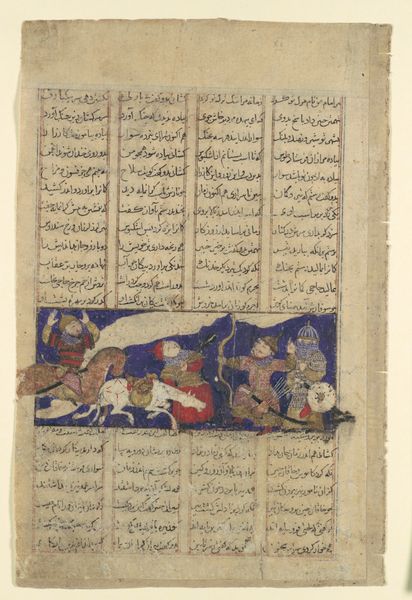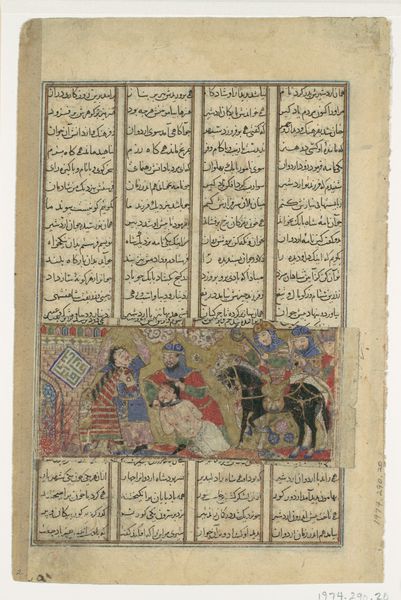
"The Combat of Qaran and Afrasiyab", Folio from a Shahnama (Book of Kings) 1305 - 1365
0:00
0:00
#
aged paper
#
toned paper
#
water colours
#
personal sketchbook
#
coloured pencil
#
horse
#
men
#
islamic-art
#
watercolour bleed
#
watercolour illustration
#
sketchbook art
#
mixed media
#
watercolor
Dimensions: Page: H. 8 in. (20.3 cm) W. 5 1/8 in. (13 cm) Painting: H. 1 7/8 in. (4.8 cm) W. 4 3/16 in. (10.6 cm)
Copyright: Public Domain
Editor: Here we have "The Combat of Qaran and Afrasiyab", a folio from a Shahnama, or Book of Kings. It dates to between 1305 and 1365 and is attributed to Abu'l Qasim Firdausi. Looking at the watercolour illustration, what strikes me is the sheer chaos and dynamism crammed into such a small space. How do you interpret this work? Curator: What immediately captures my attention is how this miniature serves as a visual record, or even a form of propaganda. We see the idealized heroic figures, Qaran and Afrasiyab, locked in combat, part of a broader narrative shaping Iranian cultural identity. The Shahnama was instrumental in defining Persian cultural heritage, especially during periods of political fragmentation. Notice how the vibrant colors, although somewhat faded now, would have originally projected power and authority. Do you think the context in which it was produced alters your perception of the piece? Editor: Absolutely, considering it as a nation-building tool changes how I see it. The almost cartoonish violence feels less about pure spectacle and more about solidifying a cultural narrative. It also makes me wonder about the patrons who commissioned such work, what their priorities and biases might have been? Curator: Exactly! Think about who controlled access to this imagery, who was literate, who could afford such manuscripts. These artworks weren't passively consumed; they actively shaped social values and reinforced hierarchies. It's a fascinating intersection of art and political power, don't you think? Editor: I never thought about illuminated manuscripts in this way, always focusing on the artistic qualities. Now I see it as a powerful political object, which brings a fresh understanding. Thank you! Curator: My pleasure! Understanding the layers of historical and social influence is essential when engaging with any artwork. There is always so much more beyond just the aesthetic.
Comments
No comments
Be the first to comment and join the conversation on the ultimate creative platform.
